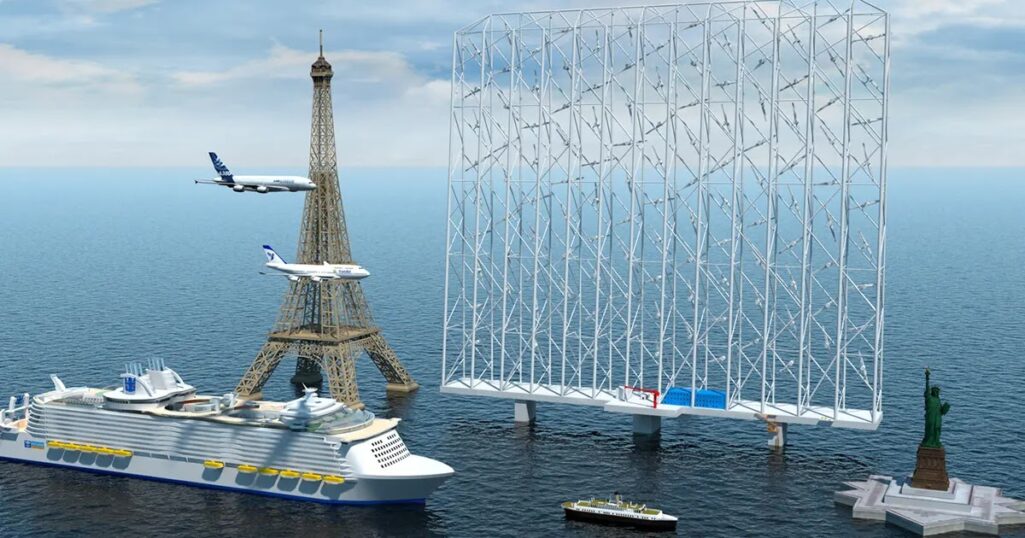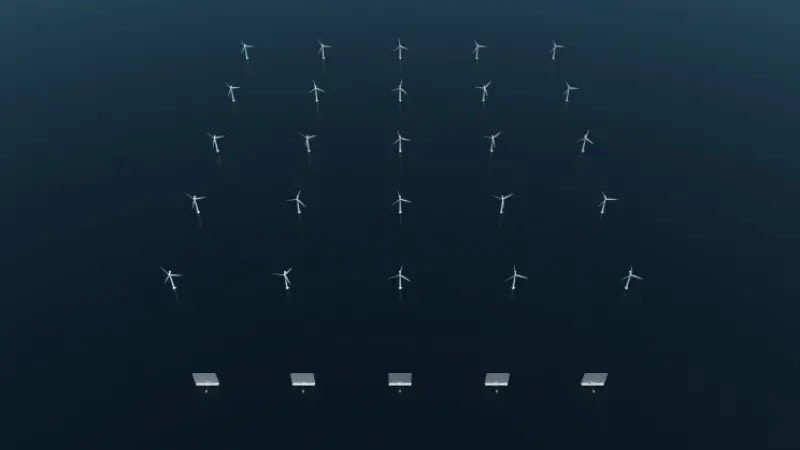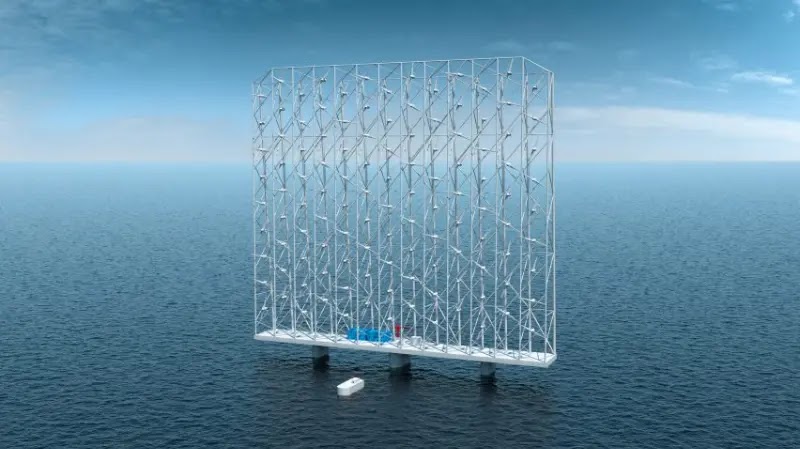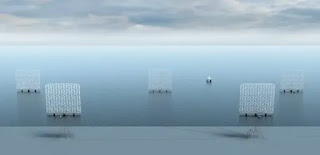
Wind Catching Systems, a Norwegian business, has invented a floating offshore wind power system that generates electricity at a far cheaper cost than traditional wind turbines, thanks to creative engineering.
Reduced costs for offshore wind turbines

Using 126 tiny rotors on a 1,000-foot-high (324-meter) structure, the floating Windcatcher can generate enough power for 80,000 households, according to Wind Catching’s website. The company claims that 5 Windcatcher units can create the same amount of electricity as 25 conventional wind turbines for a fraction of the cost of those 25 traditional turbines.
To put it another way: The system’s Levelized Cost of Energy (LCOE) is around $105 per megawatt-hour, according to the manufacturer. If all goes according to plan, it may be a system that unlocks the potential of offshore wind, allowing governments throughout the world to meet their net-zero targets.

According to Engelhart-Willoch, the VP of Industry and Government Affairs at Wind Catching, this exceptional efficiency may be summarized in three basic points:
- To reduce maintenance and operating expenses, autonomous service systems and simpler turbines are necessary to achieve this goal.
- Another advantage of shorter blades is their ability to increase wind speed, allowing companies to “take advantage of exponential expansion in wind’s power content.”
- Finally, “a modular system that provides for a considerably longer design life than what makes sense for single-turbine technology.”
This new Windcatcher 126-rotor will “dramatically reduce costs” for wind energy, according to its makers.
Better than traditional wind turbines

Floating turbines, as opposed to those with permanent foundations in shallow water, may use the stronger winds that blow over the wide ocean.
However, because of their enormous blades, which can reach a length of 115 meters, these floating wind turbines typically only operate at 11 meters per second of wind speed.
By utilizing a greater number of smaller turbines with 15-meter-long blades, Wind Catching Systems wants to increase the efficiency of floating wind farms by capturing winds up to 17 to 18 meters per second and generating more electricity.
At 11 m/s, the wind has a power density of 350 watts per square meter, according to Heggheim.
Thanks to the wind’s energy density, it’s possible to tap into 13,000 watts of wind energy at 17 meters per second.
Humanity’s future is in danger, and it’s time for radical change
With a 50-year lifespan, Wind Catching claims that its modules can produce 400 gigawatt-hours of electricity per year, which is 30 years longer than the average offshore wind farm. This implies that not only will the system create more energy, but it will also produce less waste and need a smaller footprint since each unit will run for longer durations, decreasing the number of installation procedures necessary.
Though the business has not yet chosen a specific date or location for a pilot operation, it has stated that it may take place in 2024.
No comments:
Post a Comment